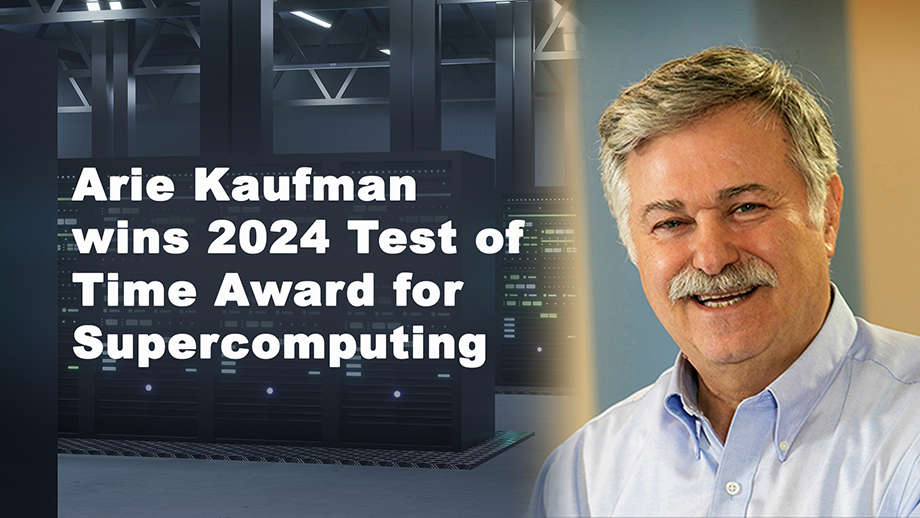
Professor Arie Kaufman has been honored with the SC24 Test of Time Award (TOTA) for Supercomputing for his seminal 2004 paper, “GPU Cluster for High Performance Computing.” Two decades ago, Kaufman, along with Postdoc Suzanne Yoakum-Stover and PhD students Zhe Fan and Feng Qiu, revolutionized high performance computing (HPC) with their groundbreaking research on GPU clusters. This pioneering work laid the foundation for the extensive use of graphics processing units (GPUs) in clusters and supercomputers today, earning this prestigious accolade.
“This distinguished recognition not only honors the exceptional quality and lasting impact of our research but also reflects the dedication and innovation of our faculty,” said Samir Das, Chair and Professor of the Department of Computer Science. “It highlights the innovative and influential work that continues to shape the future of computing and underscores our department’s commitment to advancing the field of computer science. Congratulations to everyone involved for this remarkable achievement and for setting such a high standard in our field.”
While Kaufman and his students previously advocated for leveraging a single GPU—originally designed for graphics rendering—for general computations, their 2004 paper was the first to explore and validate the potential of GPU clusters for large-scale, high-performance computations. Today, GPUs are integral to clusters and supercomputers, driving advancements in machine learning and artificial intelligence (AI). Nearly all of the world’s fastest supercomputers now utilize GPU chipsets, including those used for training large-scale AI models like large language models (LLMs). Reflecting this shift, NVIDIA, which dominates 92% of the GPU market as of 2024, has become the world’s largest company by market capitalization, surpassing $3 trillion. According to the Futurum Group, GPUs constitute 74% of chipsets used in AI applications within data centers, a figure projected to grow by 30% annually over the next five years, reaching $102 billion by 2028.
“This TOTA award represents a major recognition for the powerhouse of the Center for Visual Computing (CVC) in developing visionary and disruptive technologies,” said Kaufman, who has directed CVC for nearly 3 decades and led the SC04 paper research. “The paper is one of my two most cited papers and was a result of a decade of passion for GPUs.”
The annual TOTA award recognizes a single paper published in the SC Conference Proceedings 10-25 years prior that has significantly influenced the HPC field. Kaufman and his team’s 2004 paper highlighted the advantages of GPU clusters, noting their cost-effectiveness and superior performance in contrast to CPUs, due to additional cores, on-board texture memory, and massive parallelism. Their paper demonstrated that interconnected GPUs could achieve even greater performance and cost-efficiency for larger computing tasks. Their innovative work was showcased on the Stony Brook Visual Computing Cluster, which featured 32 GPU nodes connected via a 1 Gigabit Ethernet switch. Among their notable simulations was a parallel flow model using the Lattice Boltzmann Model (LBM) to track the dispersion of airborne contaminants in Times Square, New York City, underscoring the GPU cluster’s impressive capabilities for this and other general-purpose computations.
SC24, sponsored by ACM | SIGHPC and IEEE | TCHPC, will take place in Atlanta, GA from November 17-22. At the conference, Kaufman and his team will present their landmark paper and receive their award.
This recognition highlights the visionary and pioneering contributions of Kaufman’s CVC within the Department of Computer Science, College of Engineering and Applied Sciences at Stony Brook University.
By Kimberly Xiao
